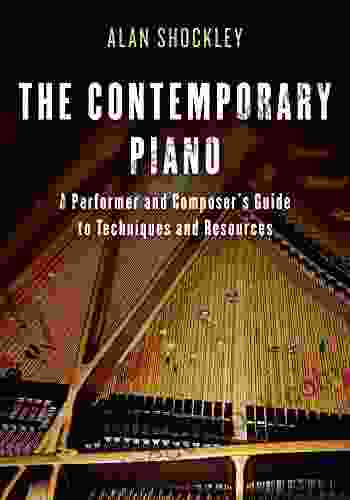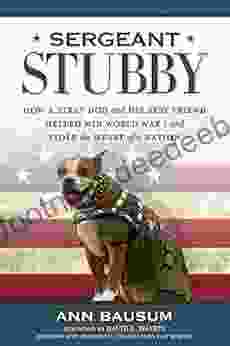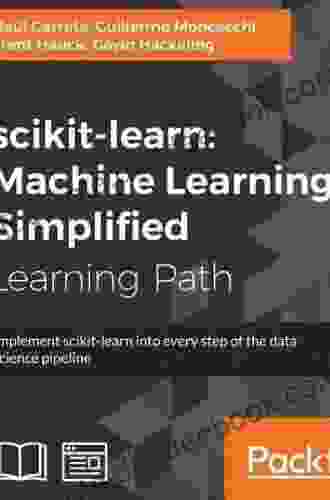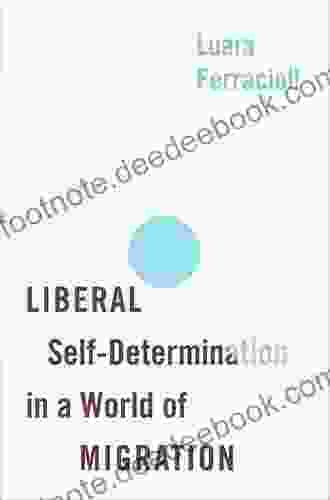The Ultimate Guide to Techniques and Resources for Performers and Composers

As a performer or composer, your goal is to create and communicate music that moves and inspires others. To achieve this, you need to master a range of techniques and have access to the right resources. This comprehensive guide will provide you with everything you need to know to improve your skills and reach your full potential.
4.2 out of 5
| Language | : | English |
| File size | : | 30278 KB |
| Text-to-Speech | : | Enabled |
| Enhanced typesetting | : | Enabled |
| Word Wise | : | Enabled |
| Screen Reader | : | Supported |
| Print length | : | 344 pages |
Part 1: Techniques
Performance Techniques
- Breath control: Proper breathing techniques are essential for singers and wind players. They allow you to control your airflow, produce a consistent tone, and avoid fatigue.
- Finger technique: For string players and guitarists, finger technique is crucial for developing speed, accuracy, and agility.
- Embouchure: The way you shape your mouth and lips is essential for wind players to produce a clear and resonant sound.
- Bowing technique: String players must master bowing technique to control the dynamics and articulation of their playing.
- Pedaling: Pianists use pedaling to create sustain and resonance, and to add color and depth to their sound.
Composition Techniques
- Harmony: Understanding harmony allows you to create chord progressions that are pleasing to the ear and that support the melody.
- Melody: A strong melody is the foundation of any great piece of music. Learn how to write melodies that are memorable, singable, and emotionally expressive.
- Rhythm: Rhythm is what gives music its groove and momentum. Learn how to create rhythms that are both interesting and danceable.
- Form: Form is the structure of a piece of music. Learn how to create forms that are logical, balanced, and satisfying.
- Orchestration: Orchestration is the art of arranging music for different instruments. Learn how to use instrumentation to create a variety of sounds and textures.
Part 2: Resources
Music Theory
- Books: There are many excellent books on music theory available. Some of our favorites include "The Complete Idiot's Guide to Music Theory" by Michael Miller and "Music Theory: From Scratch" by Eric Taylor.
- Websites: There are also many helpful websites that can teach you about music theory. Some of our favorites include MusicTheory.net and Teoria.com.
- Courses: If you want to learn music theory in a more structured setting, you can take a course at a local music school or online.
Ear Training
- Software: There are many software programs available that can help you train your ear. Some of our favorites include EarMaster and Perfect Ear.
- Websites: There are also many helpful websites that can help you train your ear. Some of our favorites include Musictheory.net and Teoria.com.
- Exercises: You can also improve your ear training by ng exercises on your own. Some of our favorites include singing melodies by ear, playing intervals on your instrument, and identifying chords.
Improvisation
- Books: There are many excellent books on improvisation available. Some of our favorites include "Improvisation: A Comprehensive Guide" by Keith Jarrett and "The Improviser's Handbook" by Jerry Coker.
- Workshops: There are also many workshops available that can teach you how to improvise. Some of our favorites include the Improvisation Workshops at Berklee College of Music and the International Association for Jazz Education's Improvisation Symposium.
- Practice: The best way to learn how to improvise is to practice regularly. Start by improvising over simple chord progressions and gradually increase the complexity as you become more comfortable.
Music Technology
- Software: There are many different music software programs available, each with its own strengths and weaknesses. Some of our favorites include Ableton Live, Logic Pro, and Pro Tools.
- Hardware: In addition to software, you may also need some hardware to make music. This could include a MIDI keyboard, an audio interface, and a pair of studio monitors.
- Online resources: There are many helpful online resources available that can teach you how to use music technology. Some of our favorites in
4.2 out of 5
| Language | : | English |
| File size | : | 30278 KB |
| Text-to-Speech | : | Enabled |
| Enhanced typesetting | : | Enabled |
| Word Wise | : | Enabled |
| Screen Reader | : | Supported |
| Print length | : | 344 pages |
Do you want to contribute by writing guest posts on this blog?
Please contact us and send us a resume of previous articles that you have written.
 Novel
Novel Page
Page Library
Library Paperback
Paperback Magazine
Magazine Paragraph
Paragraph Sentence
Sentence Shelf
Shelf Foreword
Foreword Preface
Preface Synopsis
Synopsis Manuscript
Manuscript Scroll
Scroll Bestseller
Bestseller Library card
Library card Narrative
Narrative Autobiography
Autobiography Encyclopedia
Encyclopedia Narrator
Narrator Character
Character Resolution
Resolution Librarian
Librarian Borrowing
Borrowing Stacks
Stacks Archives
Archives Periodicals
Periodicals Research
Research Scholarly
Scholarly Lending
Lending Academic
Academic Journals
Journals Rare Books
Rare Books Special Collections
Special Collections Literacy
Literacy Study Group
Study Group Storytelling
Storytelling Awards
Awards Book Club
Book Club Theory
Theory Textbooks
Textbooks Thomas Mirow
Thomas Mirow Basilio De Marco
Basilio De Marco Peter Tye
Peter Tye Steven J Brams
Steven J Brams Xianli Lv
Xianli Lv Rick Auger
Rick Auger Kathryn Clay
Kathryn Clay Guy Geltner
Guy Geltner John Siddique
John Siddique Anton Eitzinger
Anton Eitzinger Chris Chaos
Chris Chaos Lynette Noni
Lynette Noni Bridget M Cook
Bridget M Cook Virginia A Greiman
Virginia A Greiman Bill Manchester
Bill Manchester Janet Ahlberg
Janet Ahlberg Emma Friedlander Collins
Emma Friedlander Collins Muneer Al Busaidi
Muneer Al Busaidi Seth Godin
Seth Godin Arne Nerjordet
Arne Nerjordet
Light bulbAdvertise smarter! Our strategic ad space ensures maximum exposure. Reserve your spot today!

 Connor MitchellDelving into the Labyrinthine Intricacies of "The Intuitionist" by Colson...
Connor MitchellDelving into the Labyrinthine Intricacies of "The Intuitionist" by Colson...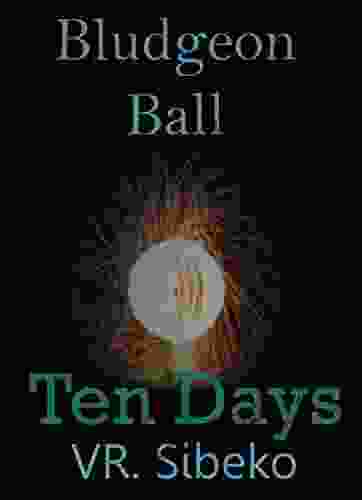
 Russell MitchellTen Days Bludgeon Ball Leo Almeida: A Journey into the Heart of Chaos and...
Russell MitchellTen Days Bludgeon Ball Leo Almeida: A Journey into the Heart of Chaos and... Stanley BellFollow ·11.4k
Stanley BellFollow ·11.4k Christian BarnesFollow ·17k
Christian BarnesFollow ·17k Alvin BellFollow ·2.6k
Alvin BellFollow ·2.6k Jesus MitchellFollow ·4.3k
Jesus MitchellFollow ·4.3k Michael ChabonFollow ·12.3k
Michael ChabonFollow ·12.3k Dashawn HayesFollow ·6.7k
Dashawn HayesFollow ·6.7k Willie BlairFollow ·18.9k
Willie BlairFollow ·18.9k Arthur C. ClarkeFollow ·19.7k
Arthur C. ClarkeFollow ·19.7k
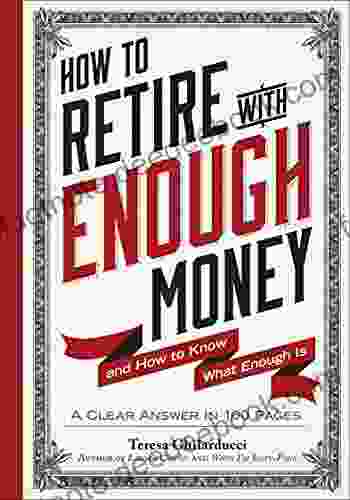
 Allen Ginsberg
Allen GinsbergUnveiling the True Meaning of Enough: A Comprehensive...
: In the relentless pursuit of progress and...
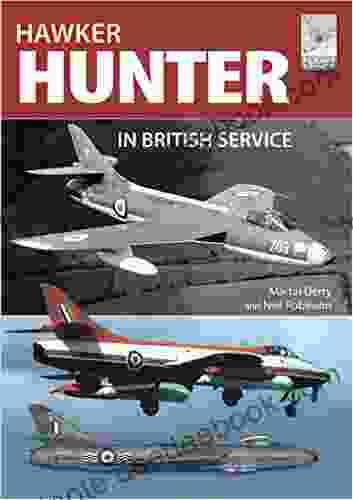
 Clay Powell
Clay PowellHawker Hunter: The Jet Fighter that Shaped British...
Nestled in the halls of aviation...
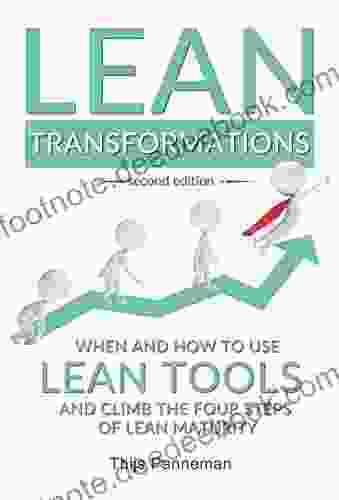
 Alec Hayes
Alec HayesWhen and How to Use Lean Tools and Climb the Four Steps...
Lean is a management...
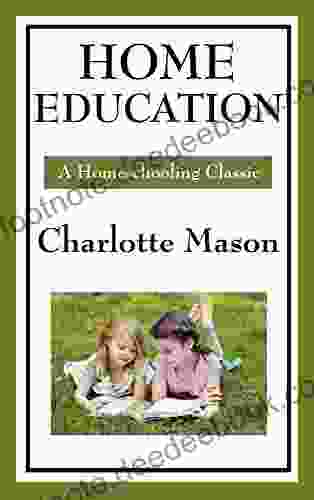
 Trevor Bell
Trevor BellVolume of Charlotte Mason Original Homeschooling: A...
Charlotte Mason's original...
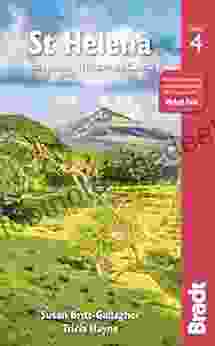
 John Parker
John ParkerAscending Tristan da Cunha: A Comprehensive Guide to...
Prepare yourself for an extraordinary journey...
4.2 out of 5
| Language | : | English |
| File size | : | 30278 KB |
| Text-to-Speech | : | Enabled |
| Enhanced typesetting | : | Enabled |
| Word Wise | : | Enabled |
| Screen Reader | : | Supported |
| Print length | : | 344 pages |


